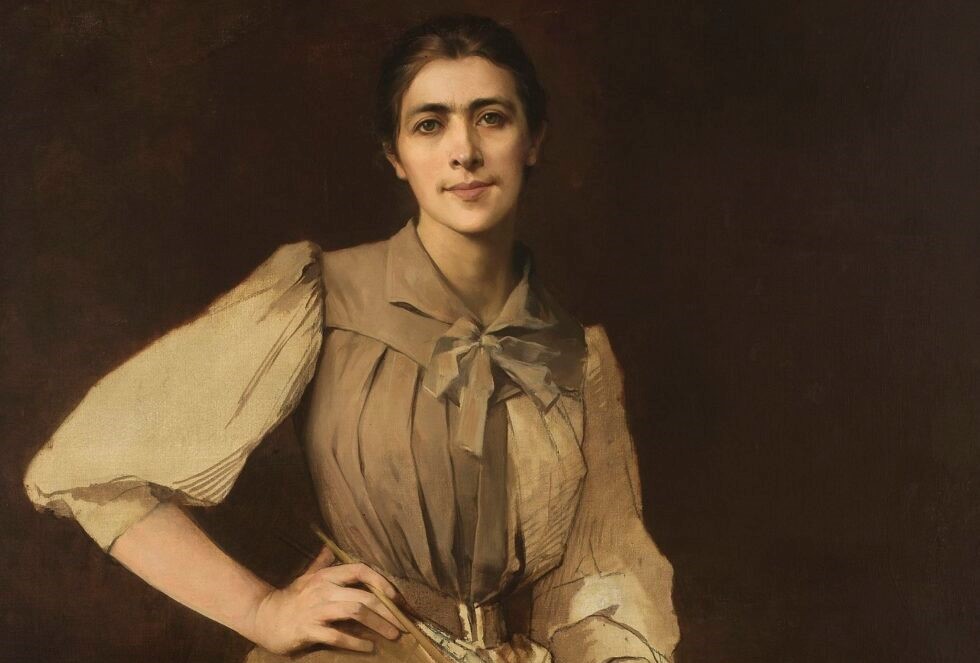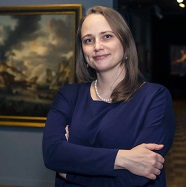By Aleksandra Janiszewska
Anna Bilińska was a member of the groundbreaking first generation of female Polish artists who broke the shackles and went on to enjoy major success in international competitions.
Her career was an inspiration for the next wave of Polish female painters, such as Olga Boznańska, to seek an education in Paris. Yet her life, and plans to establish an art school for women in Warsaw, were cut short by her premature death at the age of just 39.
A new exhibition at the National Museum in Warsaw, The Artist. Anna Bilińska 1854-1893, for the first time gives a wider audience the opportunity to get to know the work and personality of a painter with an exceptional talent and character – an independent woman defying the rigid conventions of the 19th century who eked out her own path, defying adversity and common sense.
As she wrote in a letter to a friend:
I have something of a good disposition, but more of a bad one. I must be independent, for I would break the obligations on me. I believe in my abilities and have a love for this work. Were I to encounter obstacles, I would despise them. And what then? Now I have liberty, I am as happy as nobody else…
The last decades of the 19th century, in Poland as elsewhere, were characterised by a strict gender divide in the public space. While men – at least those of certain social classes – were free to roam and conquer the world, women were assigned a place taking care of the home.
Those that did work for a living had to labour in low-paid jobs as washerwomen, cleaners or manual workers. Few options were available to moderately well-off middle-class women that allowed them a degree of financial independence without losing their good reputation. And this was crucial if they were to have a chance of a suitable marriage and (comparative) economic security.
It was against this backdrop in 1877 that Anna Bilińska signed up for classes at the Drawing Class in Warsaw (which later evolved into the Academy of Fine Arts). This school, led by the renowned painter Wojciech Gerson, was one of few places that admitted women to an artistic education.
But female students had certain restrictions to contend with. Importantly, they could not take part in classes involving sketching anatomical studies, either from a live model or from a sculpture. The mere sight of a naked male body was thought inappropriate, and even morally harmful, for young unmarried women.
Women artists were therefore denied one of the most important skills essential for correctly composing the highest-rated artistic genre – historical painting. They were therefore consigned to less serious genres – such as landscapes, still lifes or portraits.

View from the conservatory windows, 1877
In Gerson’s studio, Bilińska also formed many important friendships which would later help her. The strongest was with Klementyna Krassowska. In 1882, Krassowska’s mother invited Bilińska to join them on a tour via Munich, Salzburg and Vienna to northern Italy. Here Bilińska was able to see for herself the works of old and contemporary masters at prestigious museums and galleries.
It was also on this trip that she met the love of her life, the painter Wojciech Grabowski. Their acquaintance soon turned into a clandestine engagement. Although the couple were mostly separated by distance, their relationship grew through the medium of letters.
Bilińska was remarkably ambitious and determined. Despite the lack of financial support from her impoverished family, in November 1882 she left for Paris. She rented a tiny room measuring just five square metres, which doubled as her living quarters and studio. She made a living giving drawing and music lessons, and sometimes also selling her works.
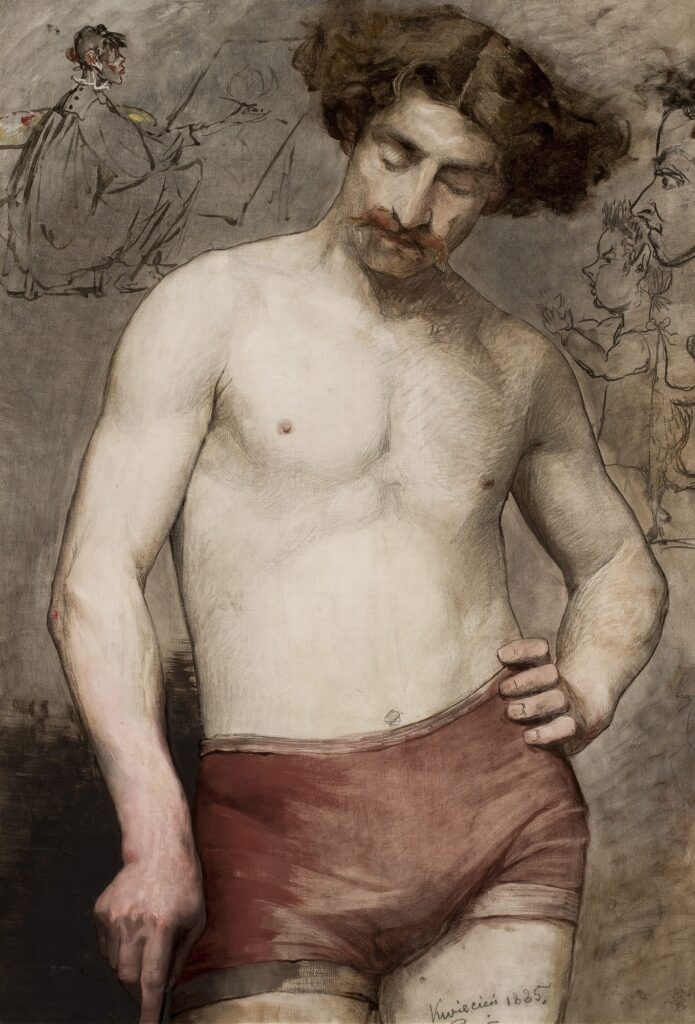
Male Semi-nude – study, 1885
She also began studies at Académie Julian, a private art school which trained women. The school employed the same teaching methods, as well as the same teachers, as the prestigious École des Beaux-Arts. Bilińska’s academic studies demonstrate an excellent command of painting techniques.
Unlike at Gerson’s school, classes for female students in Paris mainly employed life models, including male ones. But the surviving studies of male semi-nudes show that the models wore red briefs to cover their genitals – no doubt to avoid shocking the young ladies.
One stage of the education involved making oil studies of characteristic types. Black female models posing in exotic costumes were often employed for this purpose. One such study is A Female Study (historical title: The Negress) from 1887, a mature work by the 27-year-old painter.

A Female Study (The Negress), 1884
The semi-naked black model embodies strength, femininity and what was at the time regarded as exotic beauty. It is also a perceptive psychological portrait presenting an alienated person with an enigmatic gaze and mouth expressing fear and anxiety. Bilińska’s excellent feel for conveying a figure’s character and mood made her a popular portraitist.
Before Bilińska’s career could really take off, a series of traumatic experiences almost brought it to an end. In summer 1884, her father’s death left her without a livelihood, and in autumn Klementyna Krassowska, her closest friend, died, followed just over half a year later by her fiancé, Wojciech Grabowski.
The artist struggled severely with grief and depression. If not for a generous bequest from Krassowska, she would have had to return to Warsaw, and many of her most important works would never have been painted.
Rodolphe Julian, the owner of the school in Paris, also helped out by exempting Bilińska from fees and entrusting her with management of a studio. Her friend from Gerson’s school, painter Maria Gażycz, also came to her aid, taking her to Pourville in Normandy for several months.
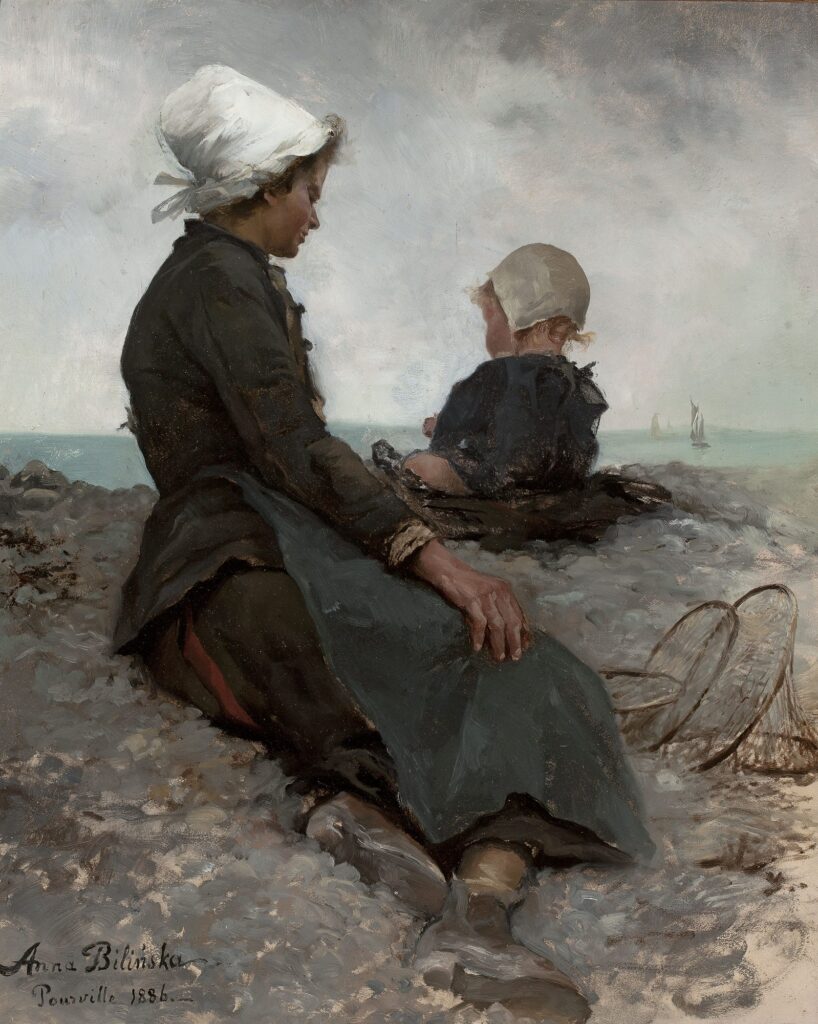
At the Seaside, 1886
Bilińska’s Self-portrait with a Palette from this time brought her enormous success – she received a third-class medal at the Paris Salon, the most important artistic competition in France. In the international press too, numerous approving reviews pointed to the strength of expression and masterly painting technique emanating from the portrait.
This was also an extremely honest work as well as a manifesto of the profession Bilińska had chosen. In a world still dominated by male painters, she portrays herself as equal to them, with a palette ready for use, a paint-stained apron and an expression of the concentration with which she studies her own facial features. With this same, somewhat tired gaze, she challenges viewers, looking them boldly in the eye.
This work was widely exhibited in Europe and warmly received, before the artist donated it to the National Museum in Krakow. It also paved a career path for Bilińska, who for the next few years received further awards and lucrative commissions, including one from an American patron of the arts, Alfred Corning Clark.
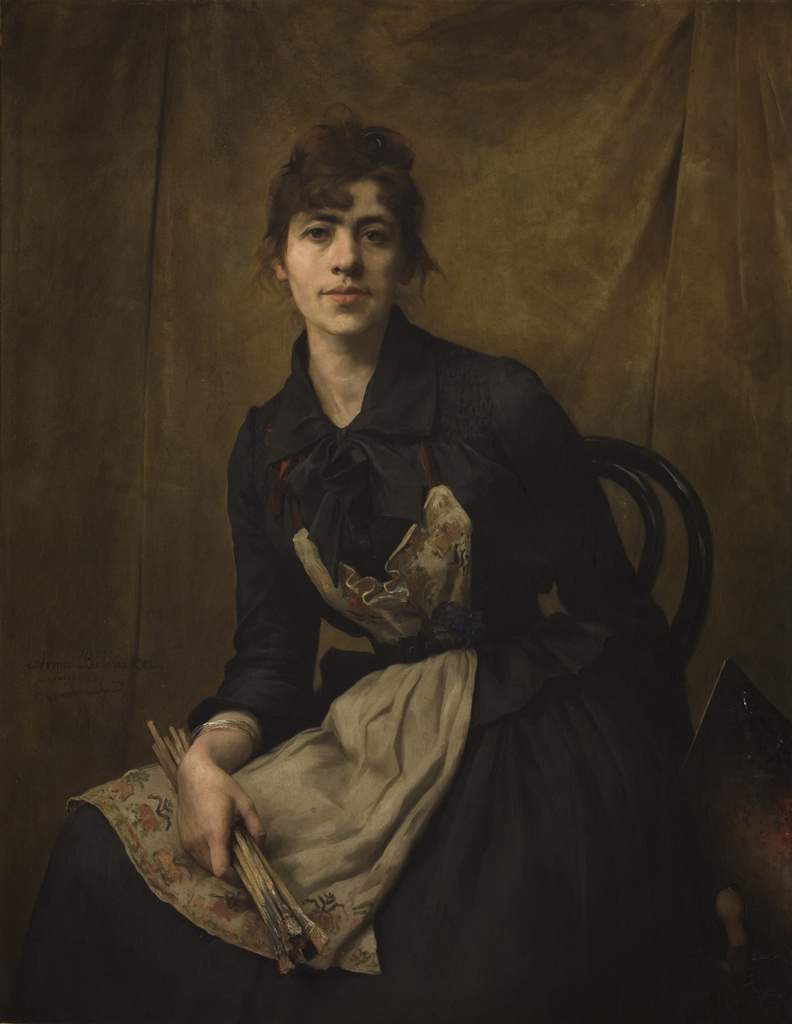
Self-portrait with a Palette, 1887
The artist’s recognition as a professional painter reached a pinnacle with a commission of her self-portrait by Ignacy Korwin-Milewski. Bilińska was to be the only woman in a gallery of the likenesses of the most important Polish artists, including Jan Matejko, Jacek Malczewski and Aleksander Gierymski.
Milewski gave the artists specific guidelines for how to compose their paintings, which were all to be in the same format and pose: head-on, showing them to the knees holding a palette, preserving the natural size of the subject
Only Matejko rebelled against this prescription, and today we can see him sitting on an armchair resembling a throne. Yet Bilińska’s Portrait remained unfinished. Her rapidly deteriorating health forced her to abandon work on it in 1892.
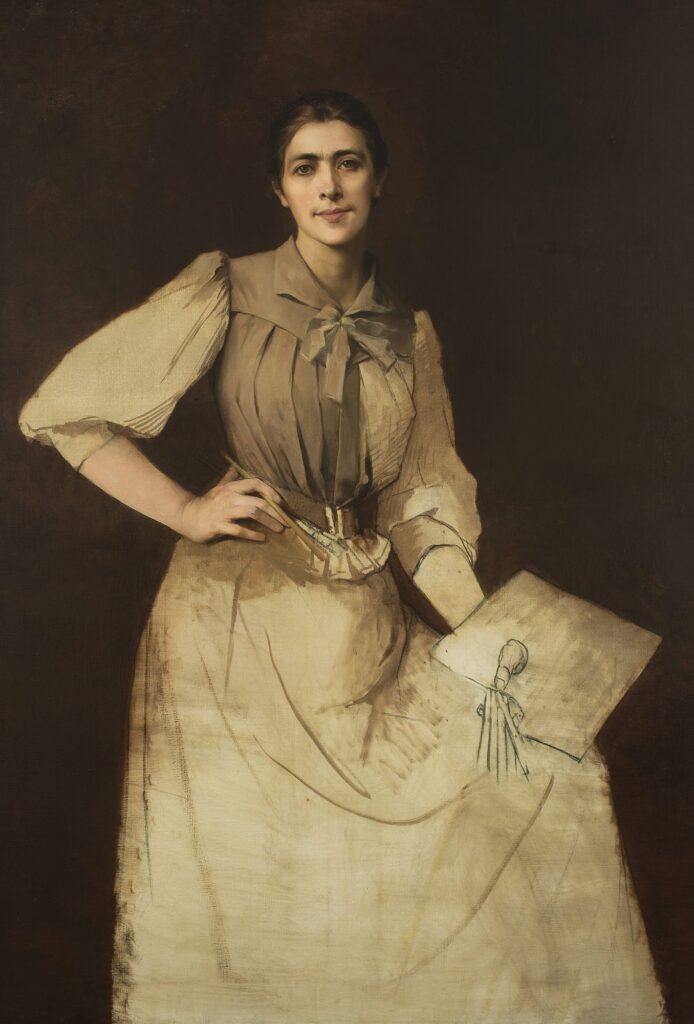
Self-portrait (unfinished), 1892
Anna Bilińska died in 1893, and her numerous plans for her return to Warsaw went unfulfilled. Having married the doctor Antoni Bohdanowicz, an ardent Polish patriot she had met in Paris, she had hoped to set up a school for female students in Poland.
As with many of her contemporary female painters, her works were forgotten in later decades. The task of the new exhibition at the National Museum in Warsaw is not only to give order to our knowledge of Bilińska’s oeuvre, but also to restore this groundbreaking painter to a permanent place in the pantheon of Polish art.
Translated by Ben Koschalka
Main image credit: National Museum in Warsaw (public domain)
